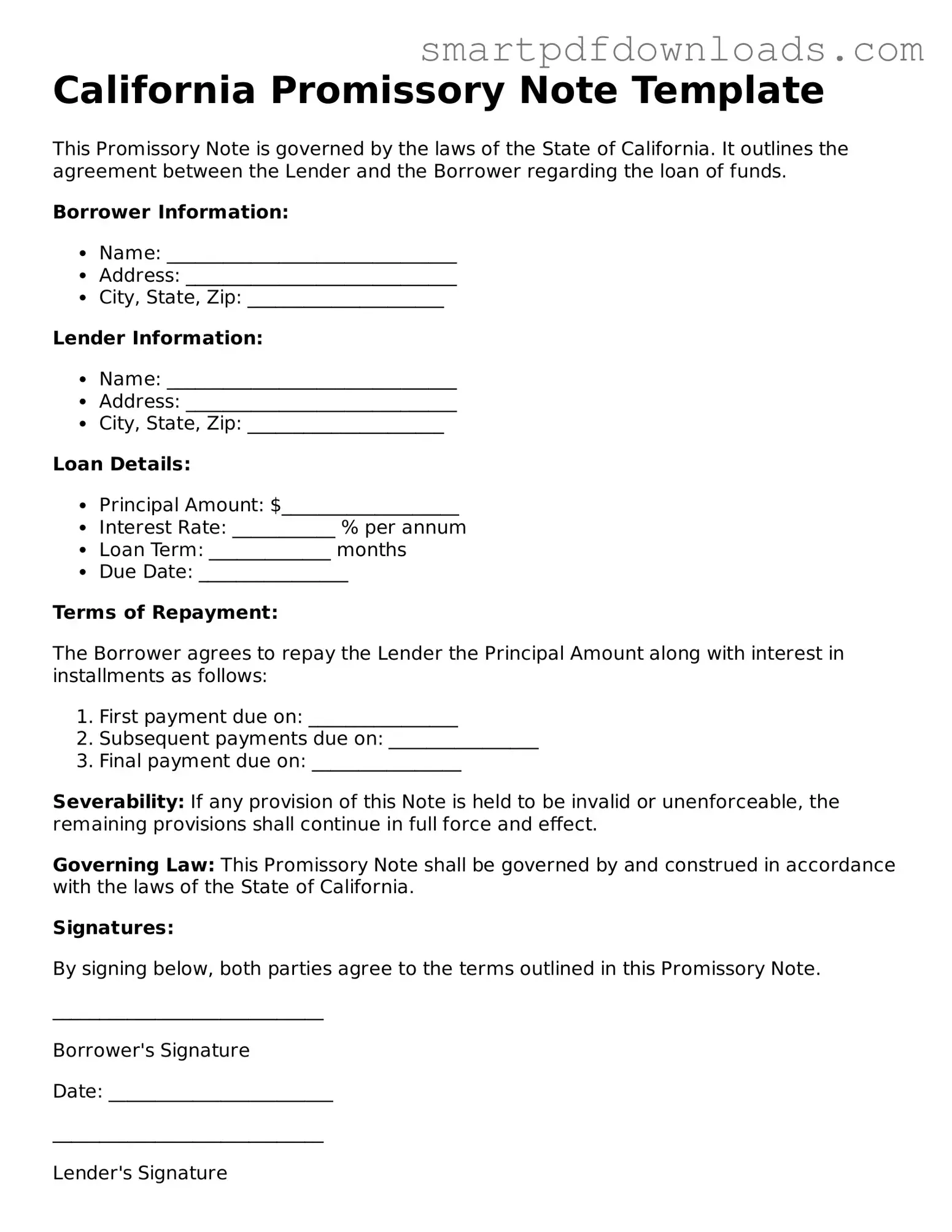California Promissory Note Template
This Promissory Note is governed by the laws of the State of California. It outlines the agreement between the Lender and the Borrower regarding the loan of funds.
Borrower Information:
- Name: _______________________________
- Address: _____________________________
- City, State, Zip: _____________________
Lender Information:
- Name: _______________________________
- Address: _____________________________
- City, State, Zip: _____________________
Loan Details:
- Principal Amount: $___________________
- Interest Rate: ___________ % per annum
- Loan Term: _____________ months
- Due Date: ________________
Terms of Repayment:
The Borrower agrees to repay the Lender the Principal Amount along with interest in installments as follows:
- First payment due on: ________________
- Subsequent payments due on: ________________
- Final payment due on: ________________
Severability: If any provision of this Note is held to be invalid or unenforceable, the remaining provisions shall continue in full force and effect.
Governing Law: This Promissory Note shall be governed by and construed in accordance with the laws of the State of California.
Signatures:
By signing below, both parties agree to the terms outlined in this Promissory Note.
_____________________________
Borrower's Signature
Date: ________________________
_____________________________
Lender's Signature
Date: ________________________
